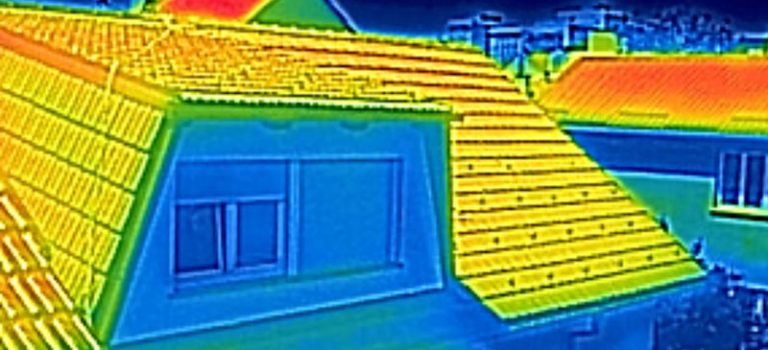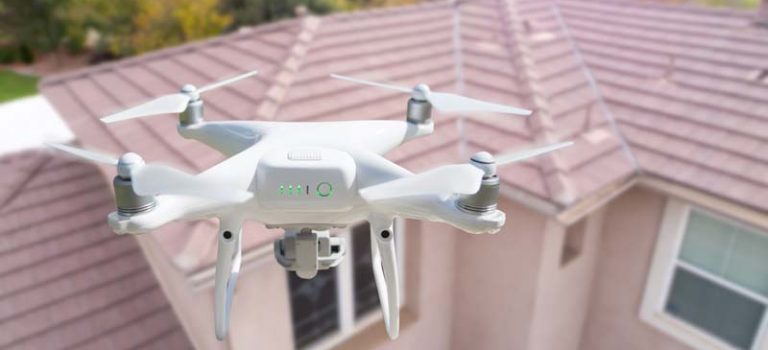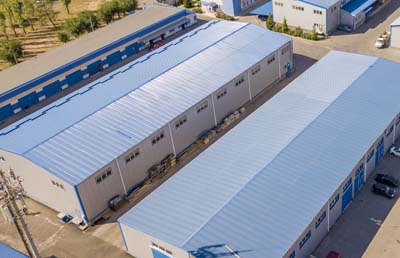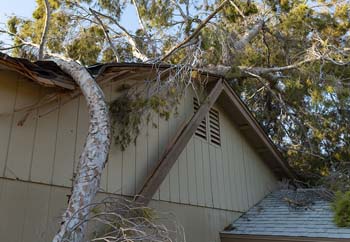There are a number of drones on the market with thermal cameras. These drones are used by professional drone users for many tasks across different industries.
Drones equipped with thermal cameras can perform many very useful tasks. Helping emergency services with search and rescue. The images can help detect water ingress on damaged roofs. They can help show drainage issues in fields. The images can highlight damage, such as cracks, before they are visible. They can highlight poor insulation. The images can even show buried structures.
In this post we will examine some of the tasks that a drone with a thermal camera can undertake. We will also provide information on the drones themselves.
Total Reading Time: 7m 50s
Which drones have thermal cameras?
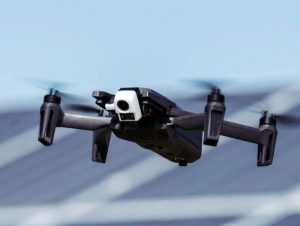
There are a number of thermal camera equipped drones on the market. These drones are not marketed, or priced, for the recreational flyer. An “entry level” drone with this capability will still have a price tag of over £2,000 when you add items such as extra batteries.
The drones at this “entry level” are those like the Parrot ANAFI Thermal or the DJI Mavic Enterprise Dual. These two drones have a sensor resolution of 160×120 pixels.
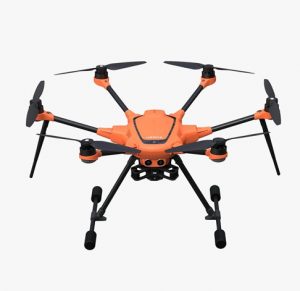
Stepping up in thermal camera resolution you could look at n a drone such as the DJI Mavic Enterprise Advanced, with its 640×512 pixel resolution sensor.
At the top end of the market the drones tend to act as the flight platform, allowing you to use different cameras. For example you can use the Zenmuse H20T thermal camera with the DJI Matrice 300 series drone. The Yuneec H520E can use a Yuneec E10Tv thermal camera.
Can a drones thermal camera see through walls?
In a word, no!
Despite what you see in movies, the thermal camera on a drone can’t see what is happening behind a wall. The thermal camera is detecting heat on the surface of what it is looking at. It isn’t looking behind or under that surface.
The thermal camera can’t see through windows either. Glass acts like a mirror to a thermal imaging camera. The drone operator will more likely see a thermal image of themselves reflected in the glass.
When can a thermal camera be used?
This is an important question because the time of day, the season and the weather will have a big impact on the results from a thermal camera.
If you wanted to find areas on a flat roof where there was water ingress then the summer would be better. The summer sun would heat the roof and, as it cools, the areas with more moisture would cool at a slower rate.
The summer is also a good time to inspect solar panels since defective cells will appear cooler than those around them. It is also possible to see hotspots which could be the result of a malfunctioning converter.
If you want to spot gaps in the insulation of your home, or to see how effective your insulation is, then cooler months are better. Autumn and early winter are good times for this type of inspection since there will be a noticeable difference between the inside and outside temperatures. This temperature difference helps to provide clearer thermal images.
Can a thermal camera help with roofing inspections.
When people think of using a drone to inspect a roof they tend to think of the insulation and where heat is escaping.
A thermal camera equipped drone can also highlight other issues with the roof.
Do you have a leak you can’t find the source of? A thermal camera can be a useful tool for finding this. As the roof cools any area which has more moisture will cool at a slower rate than the drier surrounding area.
A thermal camera can see this difference in temperature, which could highlight the source of your leak.
Many modern extensions have flat roofs which, if poorly installed or maintained, can allow water ingress leading to problems in the future. The thermal camera can be great for detecting small gaps where water is gaining access.
If you have solar panels attached to your roof then the drone can be used to inspect these too.
Can a thermal camera show poor insulation?
Using a drone to check how the insulation in your home, or commercial building, is performing is a great use for the thermal camera.
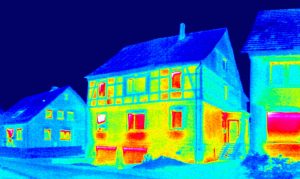
The drone can image your property from various angles and show where heat may be escaping through gaps in the insulation. You may think your property is well insulated but it can be surprising to see how much heat escapes and from where.
Do you, for instance, have rooms which always seem colder than others? The thermal camera may show heat loss in the roof area above that room. The thermal camera could also highlight heat escaping through poorly sealed vents or flues.
Having the information about heat loss in your building can enable you to improve the insulation in a targeted way. By knowing where to improve the insulation you’ll not only save on installation costs but also through savings in reduced ongoing energy use.
Is a thermal camera useful in the renewable energy industry?
Thermal camera equipped drones can provide huge benefits to the renewable energy industry.
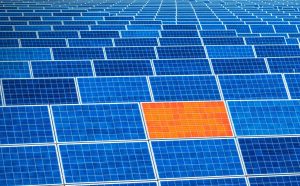
The ability of the drone to quickly cover large areas makes it ideal for inspecting solar energy farms efficiently. The thermal camera can help to spot cells which may be defective, showing as cooler than neighbouring cells. The thermal camera can also see hotspots on the panels which can highlight a failing converter.
Wind turbines are another renewable energy structure which benefit from inspection with a thermal camera. Inspecting the edges of the blades with a thermal camera can highlight small cracks before they are visible. The thermal camera can also help to inspect the nacelle area for overheating of the sensitive electronic components.
It’s not only renewable energy that can benefit from drones equipped with thermal cameras. Electricity power lines and pylons can be inspected to identify hot spots which can show failing components.
Can a thermal camera help farmers?
Agriculture is a very interesting use for a thermal camera equipped drone.
The visible light camera can help farmers to track plant growth, spot areas of damage in a field and even count individual plants. A standard camera can also provide some insights into the health of the plants.
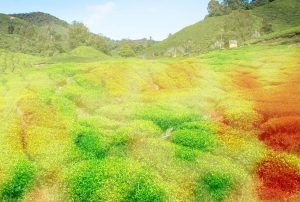
The thermal camera takes this information further. The thermal camera can help to identify areas of water stress in a crop. When a plant is healthy, and has plenty of water, it will tend to be cooler than a plant which is under stress due to a lack of water. This can lead to the identification of drainage issues and aid in the planning of effective irrigation.
Combining the thermal and standard images from the drone will provide the farmer with a more complete view of large areas of land. This saves both time and money by allowing them to target any remedial action or treatment. By improving the crop health, and by being able to track the effectiveness of the treatment, there is the potential to improve the yield.
How does a thermal camera help the emergency services?
The use of a thermal camera equipped drone to help the emergency services highlights how beneficial drones can be. Drones can help save lives when used by the emergency services.
Police services can use thermal camera equipped drones when searching for missing people. Mountain Rescue services can use them to quickly locate people in difficulty.
There are examples of more localised use of thermal camera equipped drones to help find missing pets. It’s not uncommon for local drone companies to become involved in these searches since the drone can cover large areas quickly.
The thermal camera can also “see though” smoke. The smoke will tend to be cooler than the fire behind it or the person in trouble.
The thermal camera will help fire services to spot areas which are still hot and at risk of re-igniting.
When responding to a major incident, the emergency services can make use of the drone to image the entire scene. The thermal camera provides the extra capability of seeing heat sources – is it a person? Is that area still hot enough to start a fire?
Is a thermal camera useful in archaeology?
Archaeology may not be a use for a drone equipped with a thermal camera that springs immediately to mind.
The thermal camera can help archaeologists to spot parts of a building which are buried just beneath the surface of the ground.
When the ground heats and then cools, a structure such as a buried wall will cool at a different rate to the soil around it. If the structure is close enough to the surface then this will show as a difference in temperature. This difference is exactly what the thermal camera can detect.
Even more information can be obtained by using both the thermal camera and normal camera on the drone. When combined, the images create elevation maps of the ground, overviews of the visible surface, and any temperature differences.
With this information the archaeologist has much more information when making decisions about where to focus their investigations.
Are drone services which use thermal cameras expensive?
The investment that a drone services company needs to make to allow them to offer thermal camera based services is not insignificant. It is not a case of buying a drone and offering the services.
The drone services company will also invest time and money in training, learning how to interpret the thermal images.
This does not mean that the thermal services will be expensive. Drone services companies with a thermal capability will tend to offer these services as an add-on rather than a stand-alone cost.
You may find that for a little extra the drone services company can take the thermal images at the same time as inspecting your property.
There may be an extra cost because of the extra image post-processing the drone services company will need to do.
You may also find that a drone services company will include thermal imaging in some of their packaged offers. It is usually easier to provide extra services, such as thermal imaging, at the same time as related services.
Conclusion.
The aim of this post is to provide information about how drones equipped with thermal cameras can be helpful in many situations.
Identifying poor insulation can help you save money on improvements to the insulation and lead to lower energy use.
By being able to visualise crop stress farmers can look at more targeted ways to improve the health of the crop.
Using a thermal camera equipped drone, energy companies can spot problems early and plan maintenance or repairs.
The thermal camera provides extra information that can lead to real savings.
When used by emergency services and first responders they can actually help to save lives.
So, the answer to a simple question of “Do drones have thermal cameras?” is Yes!
Going beyond the simple question shows how useful a thermal camera equipped drone can actually be, and the services that drone services companies can offer.
